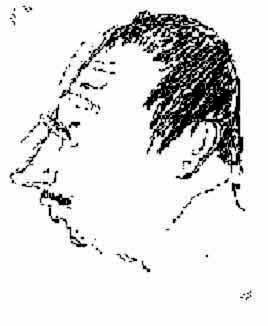


 تاريخ الرياضيات
تاريخ الرياضيات
 الرياضيات في الحضارات المختلفة
الرياضيات في الحضارات المختلفة 
 الرياضيات المتقطعة
الرياضيات المتقطعة
 الجبر
الجبر
 الهندسة
الهندسة 
 المعادلات التفاضلية و التكاملية
المعادلات التفاضلية و التكاملية 
 التحليل
التحليل
 علماء الرياضيات
علماء الرياضيات |
Read More
Date: 17-3-2017
Date: 19-3-2017
Date: 27-3-2017
|
Died: 14 May 1909 in Rome, Italy

Giovanni Vailati attended school in Monza and in Lodi. In 1880 he entered the University of Turin to study engineering. Peano was appointed as assistant to D'Ovidio at Turin in 1880 and Vailati was among the first group of students for whom he had to care. Clearly Peano had a major influence on Vailati who would become interested in topics on which Peano worked. Vailati graduated with an engineering degree in 1884.
However, probably mainly due to Peano, Vailati realised that mathematics was the subject for him so he continued to study at Turin for his mathematics degree which he was awarded in 1888. Perhaps it tell us something of Vailati's character that his classmates at university called him "the Philosopher".
Vailati did not seek employment after graduating but returned to him home in Lode where he studied languages. He did make frequent visits to the University of Turin and maintained contacts with mathematics and the mathematicians at the university. Then in 1892 he was appointed as Peano's second assistant, a position he held until 1895. Vailati, in a letter to a cousin dated 22 December 1892, described his duties:-
In the days just passed my teaching duties have left me little free time, not so much because of the frequency of the hours of school (nine a week, of which three consist of merely attending the lesson of the principal) as for the necessary preparation and elaboration of the topics to discuss so as to avoid the danger of pulling a boner.
After completing his years as Peano's assistant, Vailati became assistant in projective grometry and then one year later he became Volterra's assistant at Turin. In 1899, after spending seven years with the duties of an assistant at Turin, Vailati decided to take up school teaching. He taught at quite a number of schools over the next few years: Syracuse (1899-1900), Bari (1900-1901), Como (1901-1904) and Florence from 1904.
Vailati worked on mathematical logic, working closely with Peano on this topic, and also on the history and methodology of science. Vailati had taught a course at Turin on the history of mechanics in the years 1896-1898 and he published three essays based on this course which earned him considerable fame.
However during his lifetime his work in philosophy earned him most recognition. He was a pragmatist with views not far from those of Charles Peirce. Vailati was a member of the organising committee of the First International Congress of Philosophy which was held in Paris in 1900 immediately before the First International Congres of Mathematicians.
At the First International Congress of Philosophy, Vailati was appointed to the permanent international commission. He attended the Second International Congress of Philosophy in Rome in 1903 and the Third International Congress of Philosophy in Heidelberg in 1908. In fact this third conference was largely a discussion of pragmatism and this is almost certainly due to Vailati's influence on the committee.
Kennedy writes in [1]:-
Vailati came of a Catholic family, but lost his faith during his early university years. Throughout his life he had affectionate and devoted friends. He never married. His premature death was attributed to heart trouble, complicated by pulmonitis.
In [2] Peano describes Vailati:-
... he was modest, friendly with all, and universally esteemed, both for his learning as also for his personal qualities.
The picture of Vailati is from a caricature by A Spadini.
Books:
Articles:



|
|
|
|
دراسة يابانية لتقليل مخاطر أمراض المواليد منخفضي الوزن
|
|
|
|
|
|
|
اكتشاف أكبر مرجان في العالم قبالة سواحل جزر سليمان
|
|
|
|
|
|
|
اتحاد كليات الطب الملكية البريطانية يشيد بالمستوى العلمي لطلبة جامعة العميد وبيئتها التعليمية
|
|
|